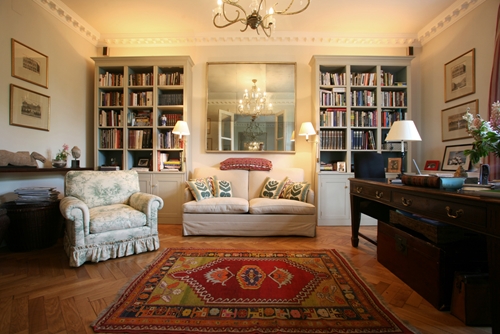
When people talk floor plans, they're usually talking about home dimensions, and not their designs for decorating their floor. However, your choice of rugs and carpets can have a huge impact on the look and feel of a room. Homeowners looking to further define their space may want to consider how rugs can fit into their own designs.
Country house plans offer great interior design opportunities, and this one in particular is a good springboard to discuss how rugs play a role in the ambience of the home. Not only does it have distinct interior visual elements with which rug designs will interact, but it also features rooms of various sizes that pose interesting flooring considerations.
Avoid too small
Dimensions are essential when choosing a rug. Too small, and the rug can appear ill-fitted for its space. As mentioned recently in Residential Architect magazine, it will pull focus toward the center of the room as opposed to the entire space as a whole. While you want the rug to be an interesting and engaging element, you also want it to fit seamlessly with the design of the rest of the room. There can also be a more practical reason for avoiding small rugs – appropriately accommodating furniture. In dining rooms, for example, you want the rug to allow room for dining chairs. So, if you had an 8' x 3' table to fit in the previously mentioned designs' dining room you would want a rug that was at least 10' x 5' so that chair legs won't scrape hardwood floors. Also, as a general rule of thumb, you will want rugs to cover the entire floor space underneath a piece of furniture and not just part.
Steer clear of big
However, rugs that are too big should also be avoided. According to HGTV, a rug should be 2 feet shorter than the room's smallest wall. Hall rugs, too, should have at least 6 inches of exposure from every wall. Having rugs any larger than these relative dimensions turns the exposed strip of floor into a distinct visual element, akin to a racing stripe along the sides of your walls. It can also give the impression that you mistakenly bought a rug that was too small to achieve wall-to-wall floor covering. Keep the dimensions significantly short of the wall and the size of the rug will appear intentional. In the great room of this design, for instance, the largest dimension of the carpet should exceed no more than about 18 feet at its largest dimension. Also, remember to fit the rug to the dimension of the room, so that if it is long and narrow, the carpet mimics the proportion.
Consider material
You also have your pick of materials when it comes to rugs. Every material from wool to bamboo has its own characteristics beyond just how it feels underfoot. Fabrics interact with light in their own ways. They also have varying levels of durability and convenience when it comes to cleaning. Smooth and sleek silk often comes with a soft but rich sheen that lets light play off of it. Silk is also costly and hard to clean. Wool is often thicker and very soft. It also absorbs more light. Bamboo is obviously harder than these materials and reflects light easily. When it comes to our example floor plan, note the cozy ambience created by the stone arches, walls and fireplaces, as well as the exposed ceiling beams and the strong shadows cast by uplighting and lamps. Bamboo would feel out of place in this home. Thicker, more sumptuous rugs that further dampen the light or refract it in interesting ways better play into the feel of the space. Silk or wool rugs may be the best material options in this home.